Charles Pakana (Victorian Aboriginal News)
I’m joined today on the program by Gooreng Gooreng man, artist Phillip Howe. Phillip has been involved in the Melbourne art scene for quite a number of decades and typically hangs around the Banyule/Heidelberg West area, and is well known for blending a lot of different styles into his artwork. Phillip, welcome to the program and thanks for joining me today.
Phillip Howe
Thanks for having me.
Charles
Give us a bit of a background on your art. Now, we had a yarn yesterday and you were brought up by an artistic mother.
Philip
That’s right.
Charles
And you were brought up under the influence of Rubens, Van Gogh and various others.
Phillip
Yeah. Well, you know, obviously mum was sort of, she’s an arts teacher as well as an artist, so she, she definitely had a major influence. I was a very young kid before I could almost walk, I was, had a pencil in hand, so always drew. And, you know, that was my kind of relief, you know, my escape and my, you know, I was often, I wasn’t probably the best behaved kid in the world, so I often got sent to my room and that was the perfect way you get back in those days you didn’t have social media and everything else.
So I used to get a bit bored, which was kind of good because that lent to creativity, you know. So from there, you know, my passions grew and I had probably a bit of undiagnosed autistic, you know, kind of just in terms of knowing some basics. I struggled with language the way they were taught at school, but what I was good at was drawing. So I always got praise for that and that was fine.
Got me through primary school, probably early high school, but then by about year seven, eight, I started to struggle because there was no written content.
Charles
So were you always planning to be an artist? Was that your aspiration?
Phillip
Yeah, look, my dad’s a plumber and he was hoping I’d take on the tools. And mum always thought, yeah, art was my journey. Dad was actually a very good drawer in his own right too. But back in those days they were sort of told, you know, what to do, almost like this is the pathway for you.
So having been on the tools when I was sort of age ten, you know, and carrying tools up three stories and trying to lift a bucket heavier than me across the plumbing roof for you. Yeah, I just thought, this is not, this is literally a crap job. So pardon me.
Charles
Well, we’re going to gloss over that one. So when did you actually start working as a professional artist?
Phillip
Professionally? Probably when I was about 17-18. I had my first sale, you know, so we had a show. As I said before, I struggled at high school, but then I did a year of TOP, and that was fantastic. I had a year of what it was called a Tertiary Orientated Program.
So it was people like. Well, it was perfect for people like me that weren’t strong on the written stuff. I really struggled with the whole examination stuff. So we actually had practicing artists firms, sculptors, painters, ceramicists, you know, the whole sort of. They were professional and full time practicing. So that was kind of a real awakening for me in terms of producing good content.
Charles
So that first bit of art, or the first art sale when you were 17, what was it?
Phillip
It was some lino prints, and also a painting was another one I had a sale in…
Charles
And what would you classify the genre of art or the style of the art that it was in those early years of being an artist?
Phillip
Well, interestingly enough, it was not too dissimilar to where I’m at now. Really strong line. And that was sort of nice, strong black and white kind of thing. So…
Charles
But nothing of culture, which is what typically is or what people associate with your work nowadays.
Phillip
Yeah, no, definitely no culture. Because, you know, I grew up totally removed from culture.
Charles
Right. So when did culture start making its way into your work?
Phillip
Well, actually, just to sort of… when I… on reflection, I thought I was totally removed from culture, but in my ceramic work, I did a whole series of what turned out to be Indigenous works. So in pottery and everything else.
Charles
Did you know at that stage that you. You were mob? Were you up knowing you were a mob? When did that discovery?
Phillip
So that was quite late in my life, and even my father’s. So he died very young, in his thirties, which is, you know, it’s that sort of story that happens too often. Yeah, it was my aunty that kind of came out, or she…she sort of dug up some of the truth. So up till then, yeah, there was nothing ever said about it. So it was well kept secret.
Charles
What impact did it have on you when you discovered your heritage and your Aboriginality?
Phillip
For me personally, I wasn’t actually surprised. I always felt this incredibly strong connection to Country. It’s very hard to explain to anyone that, you know, doesn’t have that spiritual connection, but it’s really deep seated. And it was just something I was just naturally drawn to and, you know, felt I was part of that from very early on, like, as a child. Like, it was just in there sort of thing.
Charles
Well, so apart from the ceramics, what work would you point at now and say, well, that was my first intentional foray into bringing Aboriginal culture into your artwork.
Phillip
Oh, look, I don’t think I’ve ever made a totally. Like, even in those earlier works, I just. A lot of people used to sort of feel there was an Aboriginality in there, like an Aboriginal content, but it was just organic.
It just sort of came out in my work as I kept evolving. And I think the thing with any artist, when you go into it, you can’t escape your own self. So I think it’s very deep seated for me. Like, it was just there. As I said, even from those very early works, I can look at them, to be honest, and I don’t see a massive, massive difference.
Charles
Well, let’s talk about an exhibition that is currently going on, and by the time a lot of people will listen to this, the exhibition will be over. And that’s the Two Conversations of the Birrarung that’s being done with a fellow artist. Now, this is actually providing a commentary on Country which is not your Country.
Phillip
That’s right.
Charles
So how do you, as an Aboriginal artist, interpret and portray culture that’s not yours, but maintaining respect to the Wurundjeri Woi wurrung people?
Phillip
Yeah. Well, again, I suppose I’ve approached it first and foremost with the utmost respect for Wurundjeri Woi wurrung people and the greater Kulin Nations for that sake. So I’m very mindful of that, more so these days. But, you know, as I’ve become more and more aware and connect with the culture.
But equally, my work, from an artist’s point of view, it’s still the motives and the symbolism, and the majority of what’s into my work is really still my kind of style and my storyline. So it’s very much like when I look at the trees and the shapes in the bark and how the river winds and all those things that, you know, from close observation. And definitely Aboriginal people have that every day.
That’s literally our backyard. So when you see that and you observe that and you slow down, those things present themselves, those imagery. And I think, you know, I’ve had to interpret in my way. So I’ve been totally respectful in terms of content, but I haven’t done, like, say, particular, like, ceremonies or types of things like that. It’s more, for me, it’s capturing the essence of the actual river itself.
And the Gooreng Gooreng people are proud river people as well. So there’s that synergy with that. So that was something I was naturally drawn to. I know my son, he lives in the ocean, and, you know, it was very difficult growing up out this way, having to take him to the beach on regular basis. But even this day, he still lives there, you know, like, he’s got to be in the ocean every day. He actually feels cleaner and more refreshed. And, I don’t know, it’s just…
Charles
So you mentioned that you are simply doing your work as your own personal interpretations of the Country that you see and you live on. Do you ever see a time where you might like to work with the Wurundjeri Woi wurrung people and do something specifically for them?
Phillip
Oh, sure, sure. You know, I’m actually embarking on a project at the moment which is deeply in conversation with the Wurundjeri people, the Elders. But it’s also. It’s a balancing act because we’ve got a lot of other mobs potentially involved with this that aren’t on Country.
So this is a whole conversation we’re having to have right now, because they’re carvings that are going to be in a significant cultural place in Naarm, and it’s just going through that sort of conversation at the moment. So I allowed, you know, the Elders, like Stacey and, you know, Nicholson and others to discuss that conversation.
That’s not part of mine. I’m kind of going to be the conduit to present that in an artistic way. But in the same time, I’m trying to. I think it’s really important to probably represent all those mobs that have been displaced, not by choice, and then they found themselves not on their Country, and it’s not their fault, obviously. So this has to be something moving forward that we all have to understand.
Charles
Do you see in your work as an artist, other artists who don’t take that, that care of culture and duty of care when they do their own interpretation of, you know, the Wurundjeri Woi wurrung way of life, of Naarm, of the Birrarung, which is the Yarra river, of course. Do you see people make these mistakes?
Phillip
Well, you know, I mean, growing up in this sort of environment, I mean, obviously we all was well documented or promoted, the, you know, the Heidelberg school and the Heidi school and all that sort of thing. So you had, you know, your Tom Roberts, your Mc Cubbins, your Walter Withers.
That was very much something that was my first experience of the river was sort of through those pioneering eyes almost. So they weren’t necessarily trying to tap into Aboriginal content, but certainly it was interpretation from their perspective. So they often. Well, they never captured, really, the true spirit when you look at it.
Charles
But what are some of the dangers that you see for artists who simply come on here and think, yep, this is. We live here, and we’re talking about Aboriginal and non Aboriginal artists, you know, when it comes to falling over yourself from a cultural perspective in respecting the Wurundjeri Woi wurrung, or whoever the Traditional Owners are in the Country that you’re depicting in your art.
Phillip
Yeah, yeah. Well, like as an example, I suppose, you know, dot painting has been adopted by everybody. Yeah. Many mobs and even those trying to reconnect. Now, if you’re not from culture or you’re not Aboriginal and you attempt to do a dot painting, basically it’s just a painting with dots.
When you have that connection and spirit and that story, those dots are there for a number of reasons. Sometimes it’s to disguise some of the most sacred of story. Also for emphasizing or creating those patterns and obviously coming from sort of more the western and desert regions, that was a natural, organic way.
They expressed story through the sand and, you know, it was a natural. We didn’t obviously, all start painting on canvases and using acrylic paints and stuff like that, so we used natural ochres and bark. And, you know, the thing with the sand stories was, you know, mobs could tell a story and then wipe it away so others couldn’t see it.
Charles
So what do you think the role of the artist is? The culturally connected and culturally appropriate artist is. Do you see that there is a role for artists in promoting reconciliation across the country? Culturally connected artists?
Phillip
Oh, absolutely. And I think there’s an avenue for all. We have the ability to kind of. Well, we’ve got strength in numbers. So if through art and through traditional practices, like weaving is another form, if we can all learn from each other, from those practices just by doing it, even if it wasn’t something that was really within your mob, so if it was, say, didge making or, you know, because a lot of places didn’t have didges up there.
So with respect, I can’t remember the real name for that. But the thing is that that becomes something that is across all the broader mobs now. And just even playing those beautiful wind instruments again, I think it just resonates and brings people back to culture and back, back to their homeland.
Charles
But what about for non Aboriginal people? We’re talking about artists who are sharing culture, trying to tell a story, trying to get messages across. You’ve done a number of installations, so physical installations with sculptures.
Phillip
Yes.
Charles
What would your hope be for those, for the broader community to connect with Country, connect with the local Traditional Owners.
Phillip
Yeah, I think, you know, the thing is, we want everyone to walk together, so we want. Ideally, it needs to be an Aboriginal voice upfront.
Charles
Sure.
Phillip
And but with that, we need to see a sculpture or whatever that is. That can tell a lot of story. And I think if people spend the time, I think in the early days, if I just sort of go back, you know, to when the settlement came, they had their own belief systems, Christianity, catholic kind of belief system. They didn’t really think Aboriginal people were spiritual people. They didn’t believe that we had our own basis.
Charles
Just the black heathens, mate.
Phillip
Yeah, just black heathens. And we were sort of. Yeah, absolutely. Seen well below a human sort of form, really. So they never gave us the time to actually sit down and understand that there was this massively beautiful and respectful and connective culture always there.
And so I think it’s important for everyone that sees these art installations or sees these artworks and can gain a newfound respect of Aboriginal people, then that’s only going to strengthen all mobs across the board, because it’s just going to mean that we rightfully can make more impact and have more say and, you know, finally, you know, get that voice that we’ve been wanting to get upfront again.
So that’s something that I think, you know, by doing the right artwork and it inspires people, hopefully. Then they, in themselves, they decide that we need to protect culture, we need to protect the environment, the habitat, the land, the waterways, the foreign fauna. You know, if we do that together, we’re going to be able to achieve that.
But if we’re fighting, battling against that, then, you know, we’ve seen in history, it doesn’t work, you know, so it’s a very hard pill to swallow sort of thing. But at the end of the day, we need to be. Sometimes you got to pick your fights kind of thing, and know sometimes the best lead is being not passive, but being. Sharing knowledge and building strength that way.
Charles
So artists definitely have a role to play when it comes to promoting culture, promoting understanding and to promoting reconciliation, you’d say.
Phillip
Yeah, hundred percent.
Charles
What would you say, though, to non Aboriginal artists who want to work as allies and promote the culture of where they are? I mean, it’s obviously not going to be a great idea for them to go in and do a depiction of, for example, a William Barak piece. They’re going to need to go through their own way of making sure they’re doing things correctly and respectfully. What would you say to them, I.
Phillip
Think, first and foremost, yeah, they need to come from that direction of respect and understanding. So they need to immerse themselves to a point to gain that knowledge that’s there and learn from Aboriginal people that have been here for millennia.
I mean, this is the oldest living culture, of course. So, you know, why wouldn’t we learn from it? I mean, we see that if that culture was left untouched, it’d still be thriving today. And we’re seeing globally how, and this is all indigenous cultures around the world, you know, if we listened to them, the world would be in much better shape.
Charles
So what would you say, then, to a non Aboriginal artist who wants to do this respectfully? They don’t know where to go. What are they going to do? Just ring up the Traditional Owners of the local area they’re on, or what?
Phillip
Well, if they’re wanting to a piece and potentially have some sort of content or, you know, they want to try and tap into, say, to William Barak or something like that, and show a little bit of an influence, a bit like, say, someone wanting to replicate a little bit of…
Or pay homage to a Pablo Picasso. But this is on a deeper cultural level, then. Yeah, I think they. It’s definitely a good starting point to immerse yourself in the local culture and the local mobs that are there. Because at the end of the day, we’re very fortunate now that we are seeing a movement where we are seeing great strong cultures and centres around.
So that’s definitely a good starting place. You know, collaboration is another one that’s a really, really good thing. We see it in music as well. I’ve been playing some music that’s through a collaboration of two Queensland fellas. One’s an Aboriginal and one’s not, but they have found this journey together, so they can walk together and they use two different types of strengths and then, you know, it’s become a. It’s quite a deadly sound they’ve. They’ve created between them.
Charles
Where can people find out more about your work?
Phillip
Well, they can probably on my best handles, my social handles. Howie h o w e artist on Instagram is probably the best one.
Charles
What about a website? We got one of those.
Phillip
We do, yeah. I’ve got to update it a little bit, but it’s www.philliphoweart.art
Charles
And we’ll have those links on our website to accompany this interview on vicaboriginalnews.com.au Phillip Howe Gooreng Gooreng man, artist. Many thanks indeed for your time.
Phillip
Thank you.


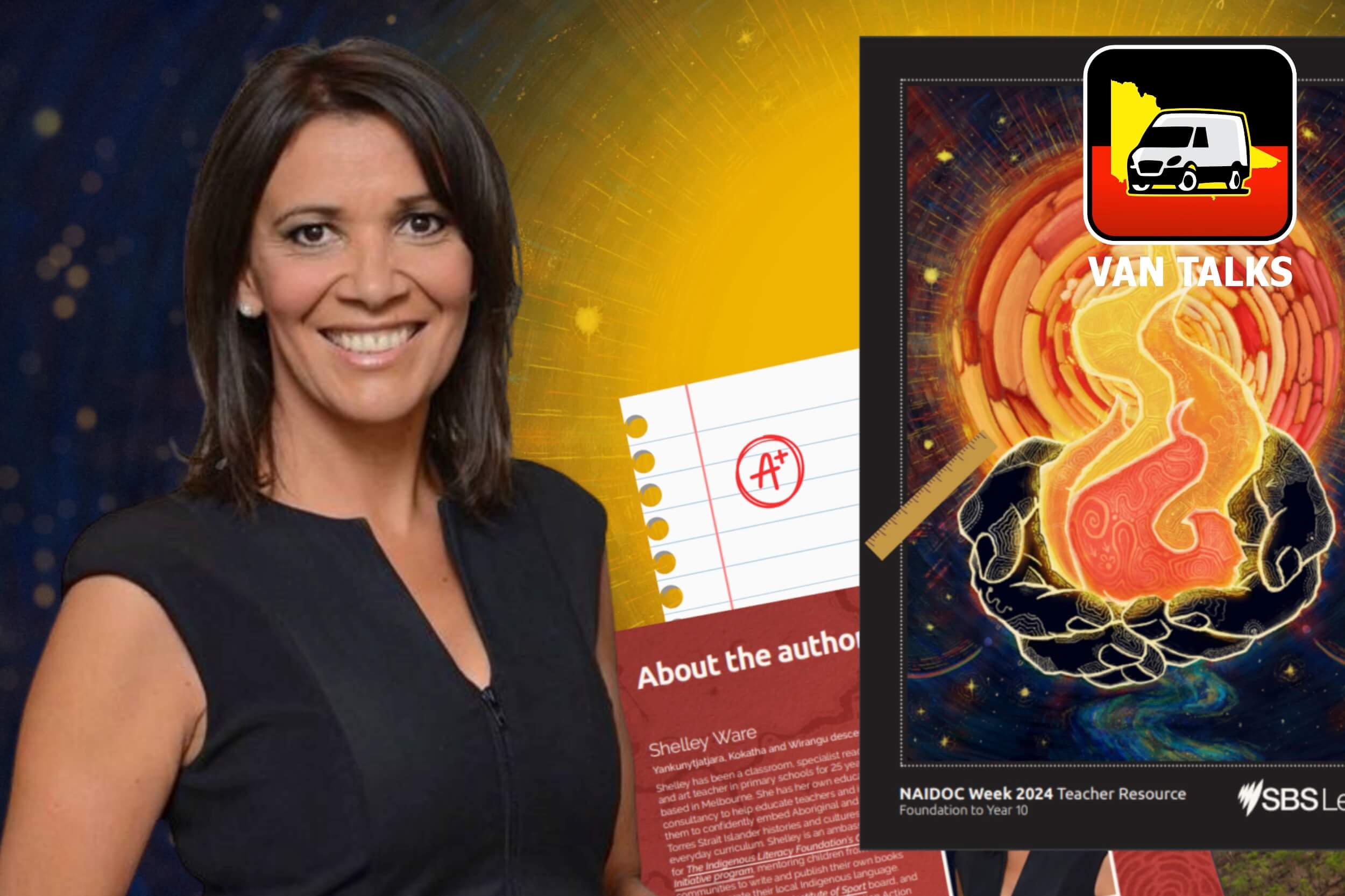
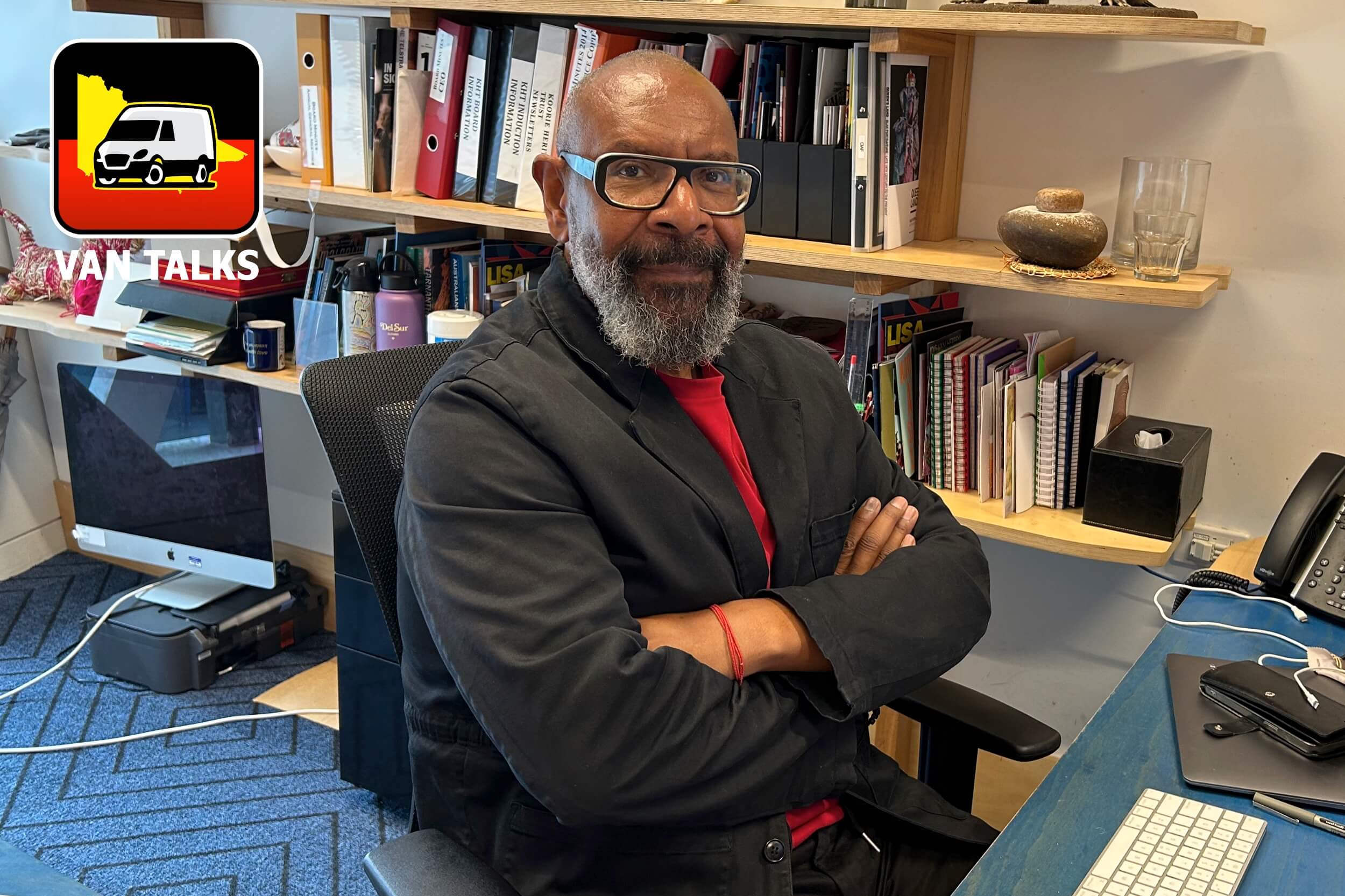
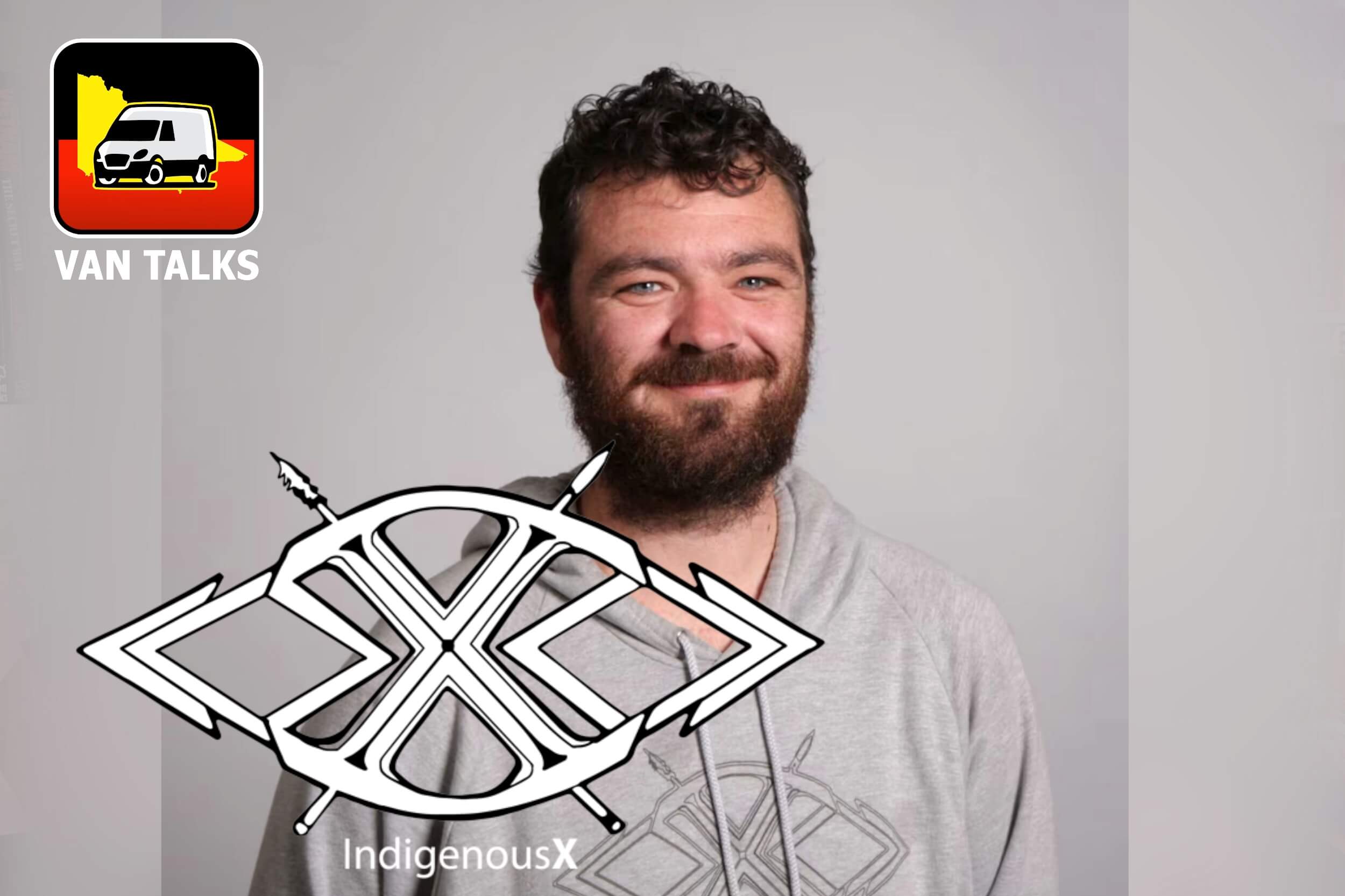
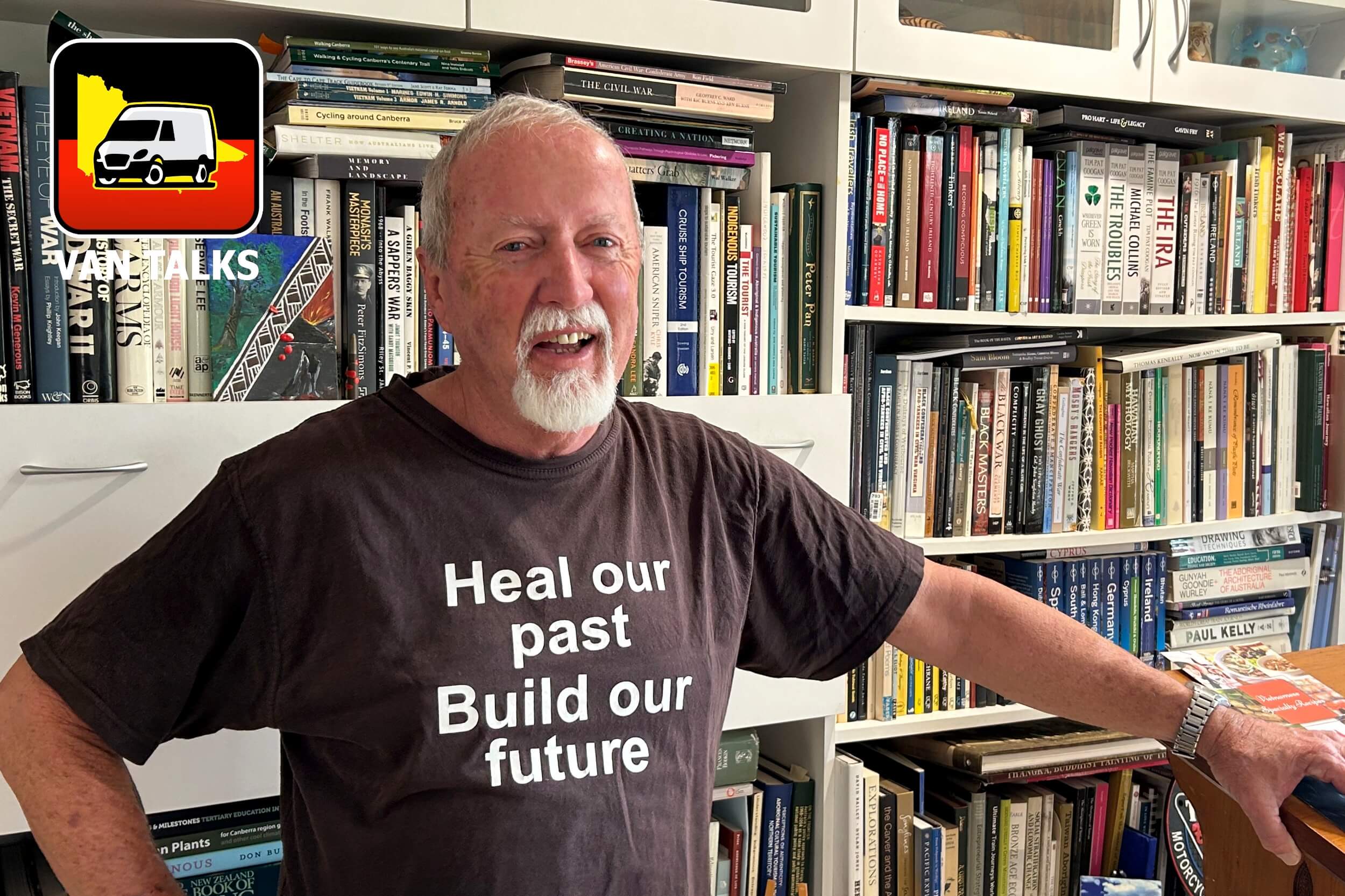
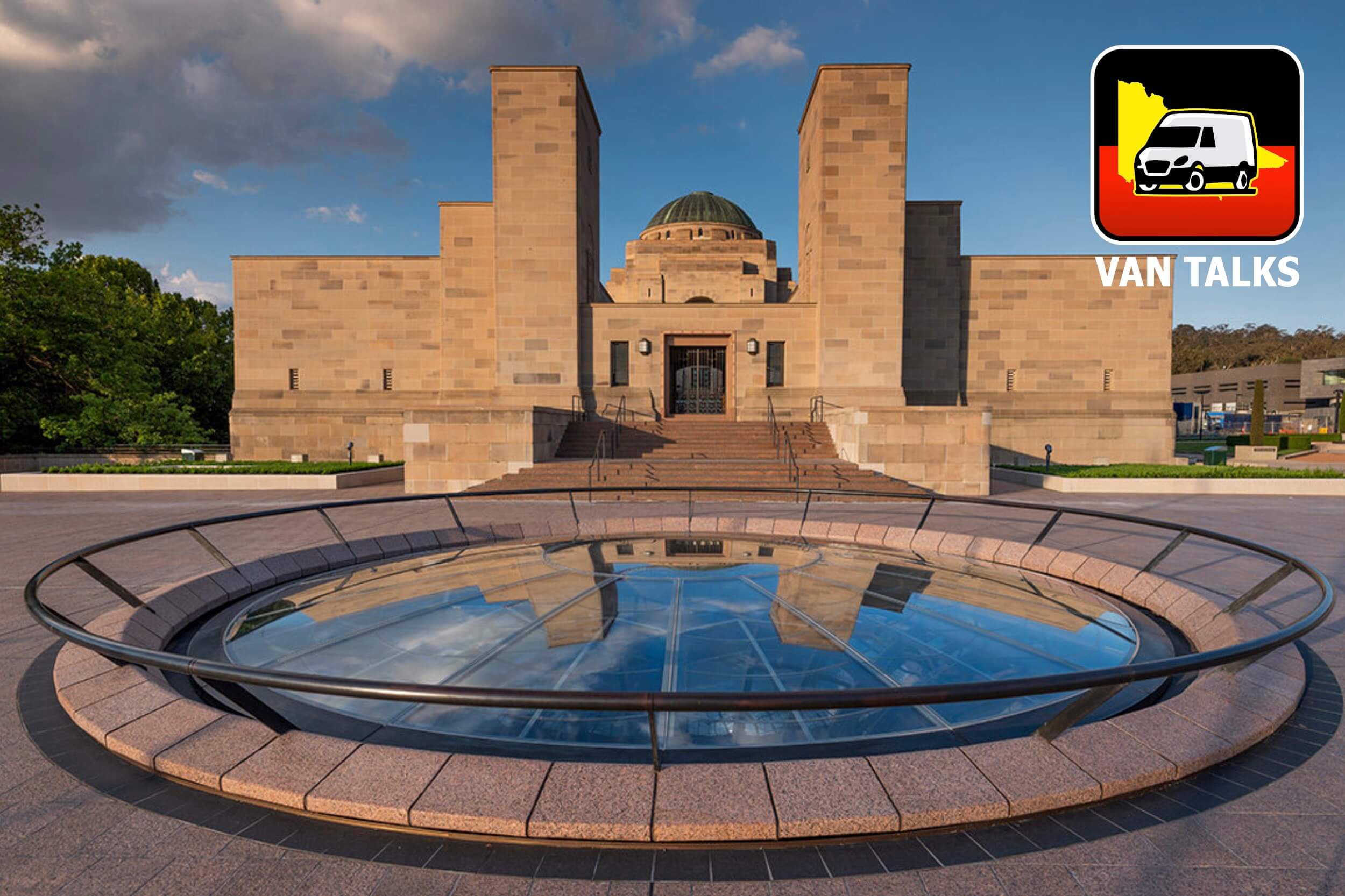

0 Comments